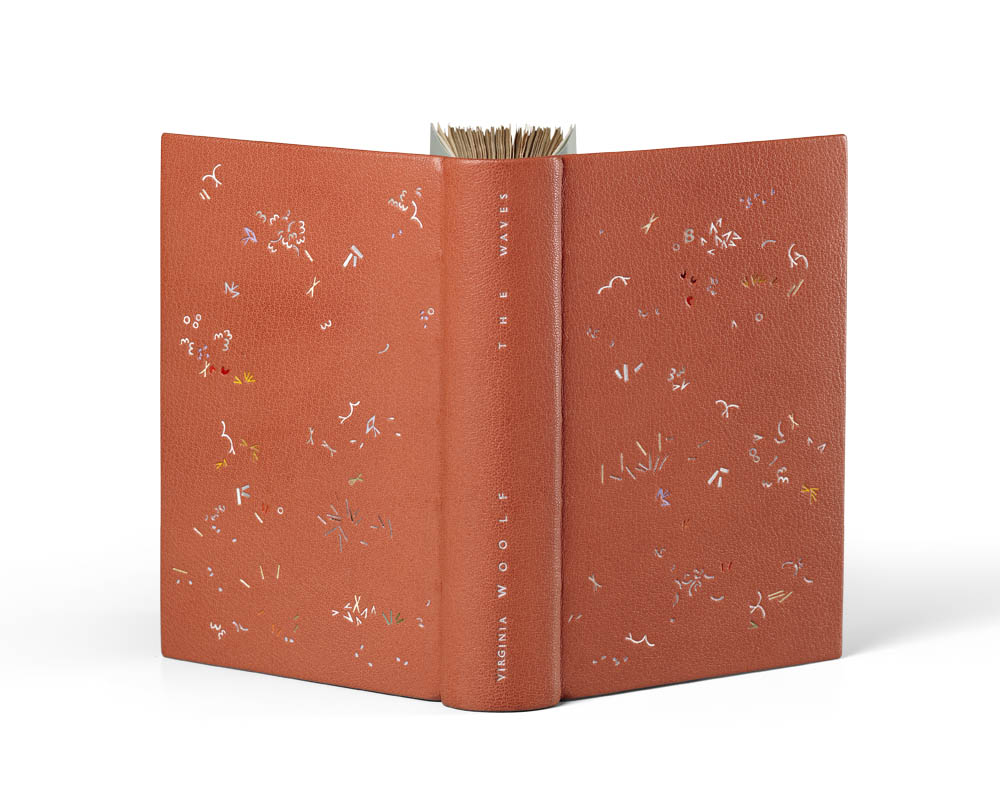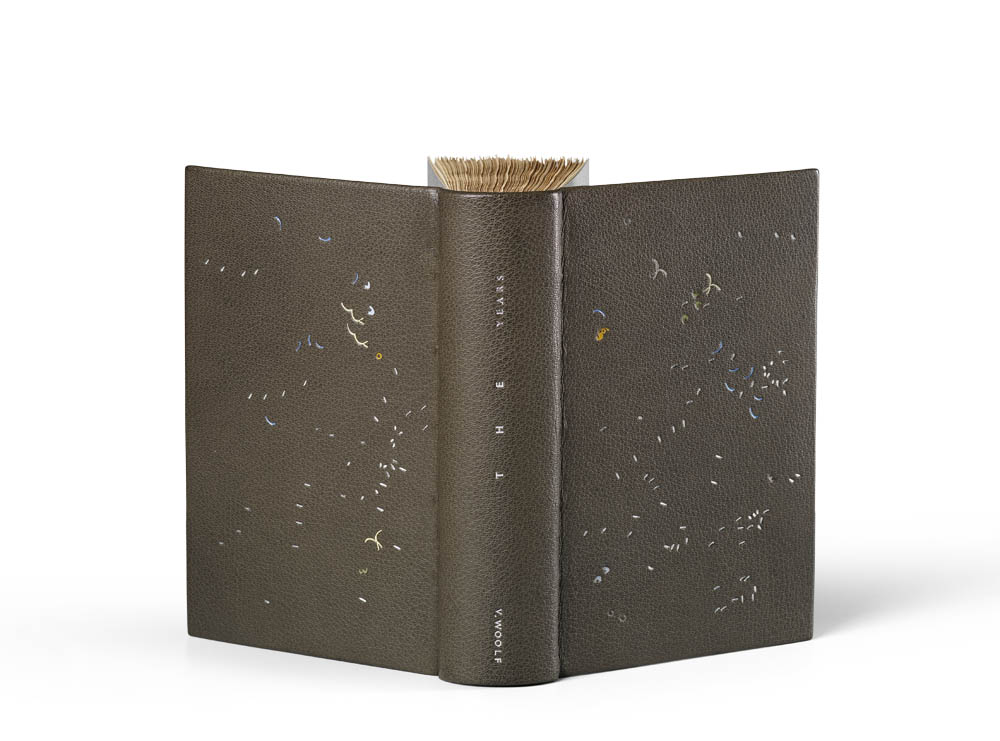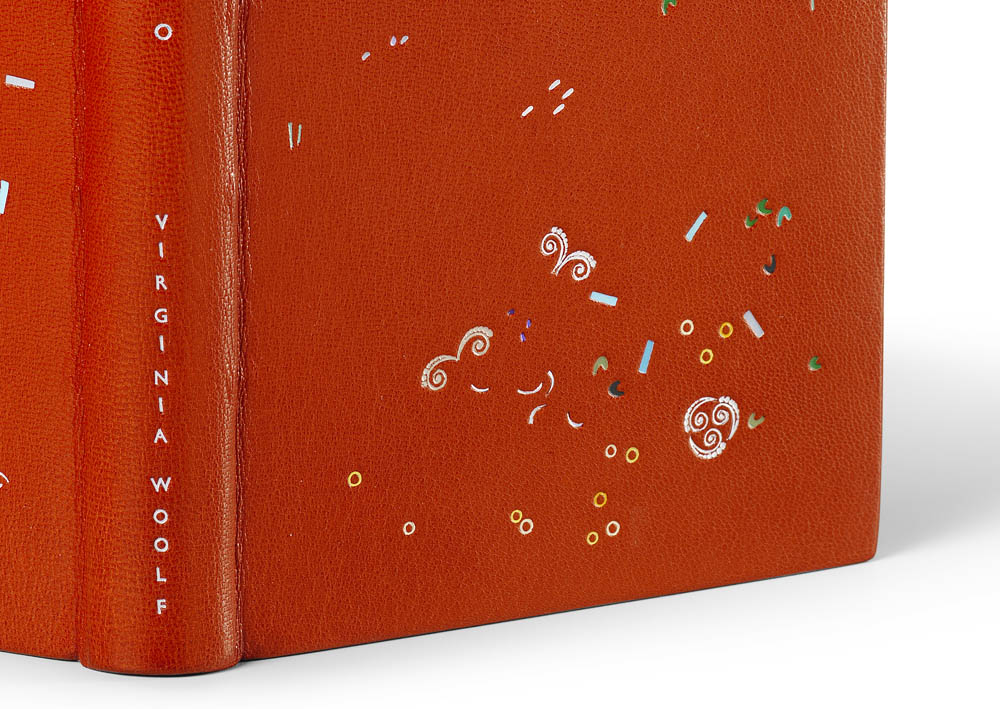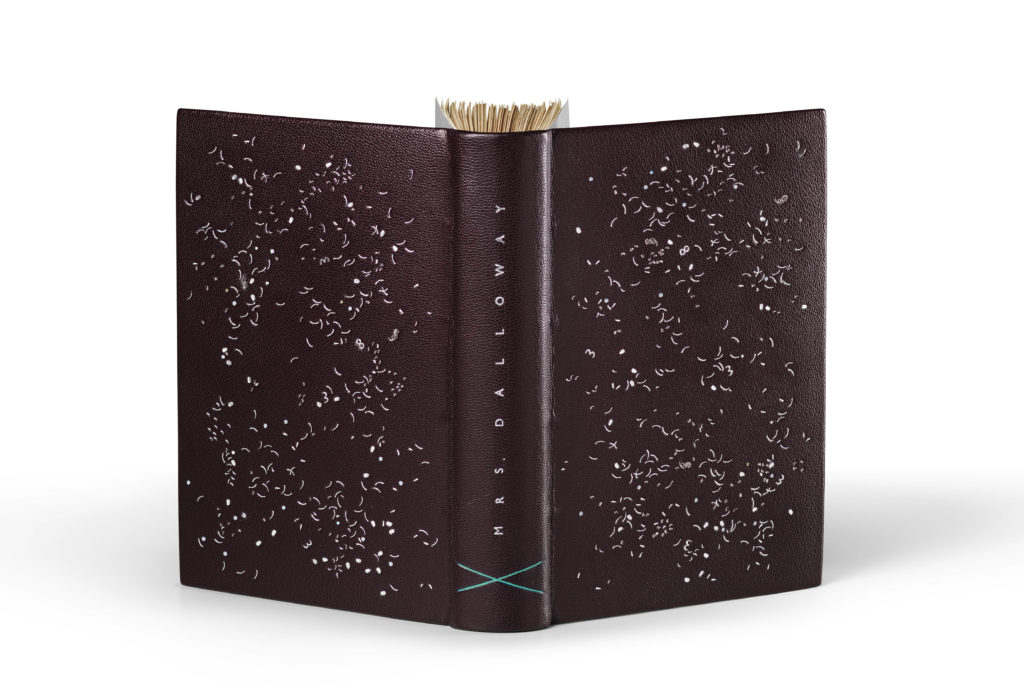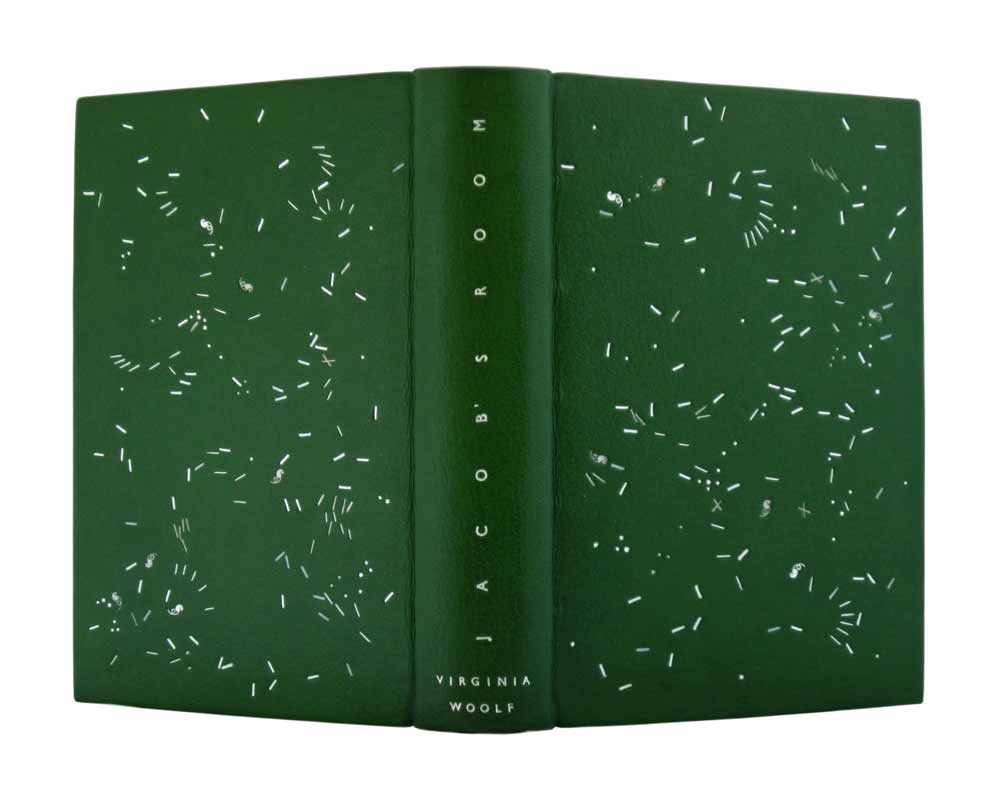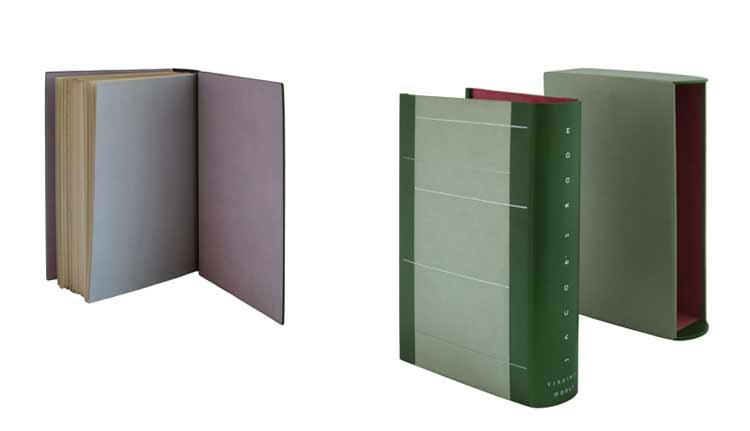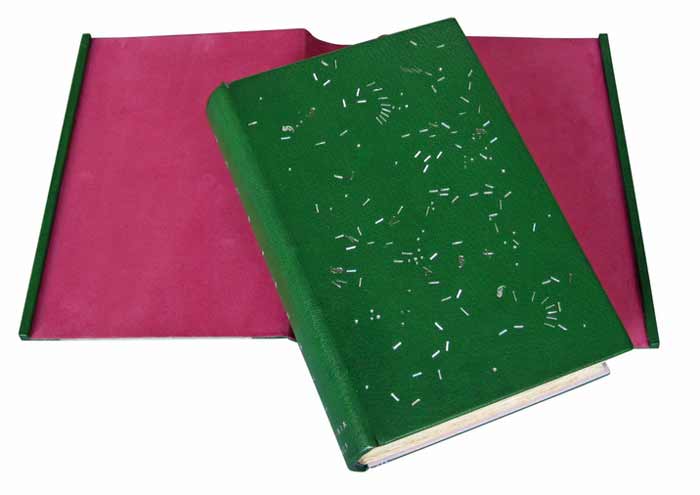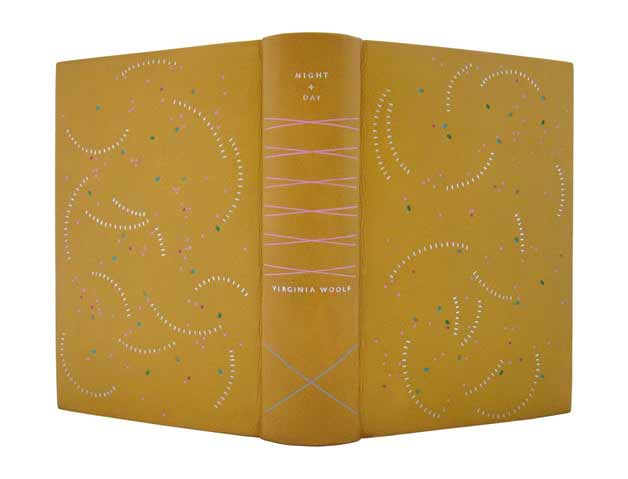With Annette Friedrich’s binding of Between the Acts we wind up both the series and the interview. Bound in 2018 in blue goatskin, the binding also has hand sewn endbands in green silk with champagne (with a purple tint) paper edge-to-edge doublures and yellow fly leaves.
The design on Between the Acts is made up of an impressive number of foils and might be my favorite out of the bunch. There are three metallic foils in two shades of silver and gunmetal with an additional twenty-three pigmented foils in the following colors: white, four shades of grey, purple, three shades of blue, two shades of yellow, five shades of red, four shades of green and three shades of brown. Also making an appearance are the special guest foils: transparent pearl and transparent neon yellow.
The chemise is inlaid with green and purple hand-dyed papers with blue goatskin across the spine. The title is tooled in green and purple foil. The slipcase is covered in the same green paper and lined with an equally green Alcantara. Tooling on the binding is done by Claude Ribal.
The final binding in the series, Between the Acts is so playful in both the design and color palette. The design is explosive and feels like a celebration; it contains more pigment colored foils than the preceding eight. Did you incorporate every tool that had been used prior?
Thank you! Gosh, it feels as if I might just have used all of them, but I do not know for sure? Actually, no. There are no dots and only very few lines. But it does not matter, it had not been my intention anyhow.
In the last post, we discussed the choices you made regarding the titling. In this binding and Mrs. Dalloway, you chose not to include Woolf’s name. Is there any significance to this?
Same answer as above: artistic license. The need to come up with the best possible design for titling over-rides the rules of accuracy and correctness. So there!
You embarked on this project in the hopes to find change and freedom outside of safety nets. You choose Virginia Woolf as your guide. I imagine you’ve developed a unique bond to Virginia; that the two of you have now walked a similar journey to discover your voices. I think the depth of what you’ve achieved is so incredible. Some binders may revisit the same title or author throughout their career; one can’t help the lure of an exceptional book. In fact, you’ve bound The Years at least three times and Mrs. Dalloway twice. Do you think you will revisit Virginia again at some point in your career?
Thank you Erin! It is wonderful to share the results and even better to observe, via your perceptive quizzing, that the things I tried to achieve seem to communicate themselves. It was the first time that I tackled such a vast project and loved digging in as deep and all immersive as that. YES! I think it is highly likely that I will revisit her books at some point in the future. There is just so much in there and I bet that each time something else will surface at my end. But for now… I will give it a little break. Phew! New things to come!
A beautiful documentation has now been published, that traces the development of this project, which, as it turns out, took seven years to complete. WOOLF I – IX ! 98pp, with an introductory essay and 1:1 reproductions of the bindings, background information, and text excerpts.
Text: Annette Friedrich, Virginia Woolf
Design: BUCHmacher, Germany
Photo: Shannon Tofts, Scotland
£30 + postage / reserve your copy at www.annette-friedrich.com



